River Bidasoa
To finish the series of articles on Txingudi, it is necessary to analyze the most important agent of the whole marsh and estuary (the river Bidasoa), since it is the origin of the materials and the fresh water that form the rafts of the marsh (in the dam of the rafts, the silts, that is, the humid soils of the rivers). In addition, we must not forget that the Bidasoa is the last salmon river of Hego Euskal Herria, due to the scant industrialization of the peoples of its banks.
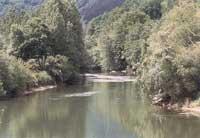
However, the river area that runs through Gipuzkoa is the most affected by the marsh. Not for political reasons (this part is the border between Navarre, Gipuzkoa and Lapurdi), but for a series of physical, chemical and biological bases:
- In the area of Endarlatsa, boundary between Gipuzkoa and Navarra, a dam was built long ago that cut off the transport of most of the upper materials. Therefore, most of the materials that today reach the marsh come from the Endara stream, which ends under this dam.
- Considering that the Endara River crosses the granite mountains of Bianditz and Aiako Harria, it is understood why some minerals found in Txingudi do not appear in the other estuaries of the Basque Country.
- This directly influences both the work giving and the fau-dni of the marsh (especially the originality of invertebrates).
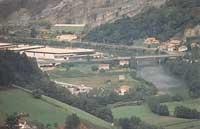
As for the lower area of the Bidasoa River, it is advisable that before going to the determinations of the Bidasoa River, the most generic of the area is explained.
In this river space, ecologically known as “Potamón”, in addition to softening the slope, the river produces large meanders in order to avoid the slowing of the speed caused by this polishing of slopes. These factors, along with the large amount of water that carries the river in these cores, make there wide and deep channels of slow water.
As for the granulometry of the materials provided by the river, it is mainly composed of gravels, although in the slower areas the accumulation of arids begins the closer to the estuary, the greater the accumulation.

Significant changes also occur in physical-chemical factors:
- Due to the laminar movement of water, the oxygen dilution that can be obtained thanks to turbidity and the water stream is zero, as other oxygen collection resources become important.
- These include, on the one hand, the high dilution of oxygen that the river achieves by modifying its channel in the meanders and, on the other, the reduction of the loss of oxygen that means not raising too much the temperature of its margins. Do not forget the microscopic algae and aquatic plants that give green color to the water in this area, which may be the main source of oxygen.
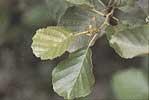
Rich vegetation. Alder (Alnus glutinosa) and willow abound when human influence is not excessive.
In these areas, when the valley opens and increases the speed of water, nutrient-rich materials accumulate through the emergence of rivers. In these areas there is an aliseda in the place closest to the water, with frequent presence of white wicker (Salix Alba) in the areas of expansion of the river. The research of these forests has special interest in some ecological characteristics of the alder. Symbiosis with certain fungi and bacteria is important. Thanks to this symbiosis, the alder is able to obtain atmospheric nitrogen. This has two main consequences:
- On the one hand, the dependence of most of the plants of the earth to obtain nitrogen disappears, since this is obtained from the atmosphere. Therefore, while the alder has acted as colonizer on several rocky shores, in the lands that appear when the valley extends, it has created rich soils.
- On the other hand, due to the symbiosis of fungi and alisos, the alisedas protect the banks of the river from flooding thanks to the biopolymers analyzed that are formed as a result of this symbiosis (which adhere to the earth) and the absorption of water from the roots.

In addition, as mentioned above, the shadow that the alisedas give to the river not only reduces the oxygen losses of the water in summer, but the water temperature does not rise too much. This protects the life of animals and plants that are not adapted to withstand sudden changes in temperature.
In the areas of expansion of the valley, behind the alisedas, ash (Fraxinus Excelsior), abrasion (Corylus avellana) and sometimes elm (Ulmus sp.) A formed forest appeared, but currently the soils of these areas are rich and are destined for agricultural uses. Of these beautiful and important forests, only a small line of alder along the river has been preserved.
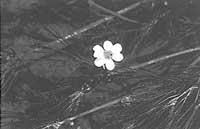
However, the importance of vegetation is not exhausted in the trees, but also the bushes and meadows have much to do with these themes of ecosis. Among the bushes is surprising the abundance of common boxwood (Buxus sempervirens) in this siliceous valley that usually appears in limestone soils and temperate climates. Next to it abound the dark willow (Salix atrocinerea), the red wicker (Salix purpurea), the brambles (Rubus sp.) and sambucus nigra.
The richness of climbing plants in this ecosystem also deserves special mention. The most abundant are the White Aihen (Clematis vitalba), the Achicera (Lonicera peryclinemum) and the Common Ivy (Hedera helix).
To this tree and shrub richness we should add an abundant herbaceous layer composed of briophyte (moss), pteridophyte (ferns) and angiosperm (plants with seeds and flowers), but since a detailed description would be too long, we will leave it there without delving further.
Wildlife
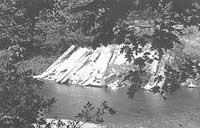
This ecosystem of abundant vegetation offers the fauna numerous ecological corners. The richness of the surroundings is evident, and if the relationship between rivers and margins has become clear in the case of vegetation, it is more evident in most of the groups of animals found in these places. Therefore, it is demonstrated that the recovery and conservation of rivers requires the recovery and conservation of margins.
The outburst of this wealth is the ability of the fauna of this ecosystem to obtain energy from its plants. In terrestrial ecosystems, field herds contain a large amount of lignin not useful to animals and few insects are able to digest this substance due to their water addiction of their larvae. In the times of ecosis on the banks, on the one hand, the abundance of insects is appreciated (since in these eco-systems water is not a limiting factor) and, on the other, of the algae found in the urea, the animals obtain a higher yield due to the absence of lignin.
Invertebrates

Therefore, considering the important role of vertebrates in these ecosystems, it is logical to begin to describe the fauna with them. Within invertebrates, arthropods are the most abundant, but it is advisable to divide them into two groups; some in the water, while others live in larval phase, others remain in it all their life.
The first are those that, once mature, will obtain a great yield of the edge ecosystem, among which stand out the order of the tricopters that build tubes in the larval state, the order of the diptera that form the group of flies and mosquitoes and the order of the odonates that form the group of graters.
The latter, however, by remaining in the water throughout their life, have much to do with diets of aquatic vertebrates and birds. The most abundant would be the order of the coleoptera (beetles) and some of the aquatic supports of the green area of the hemípteros (butterflies).
To conclude this small study of invertebrates, in these ecosystems we must mention some of the representatives of annelids and molluscs, essential in the food chains of these areas (both in the control of algae growth and in the elaboration of diets of other animals). Among the annelids are, in addition to a couple of species of the Hyrudinous class (pests), representatives of the order of tubiffins and chironomías of the oligokinetic class. As for molluscs, the most abundant are planorbis, physa and limna.
Vertebrates
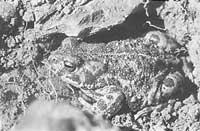
To analyze the section of vertebrates, it is advisable to leave at the end the best known of the rich heritage of the river Bidasoa, the ictiofauna, which deserves a special mention.
However, in addition to fish, the Bidasoa River and its margins are rich in the rest of the vertebrate groups. Once here, it should be noted that in the river Bidasoa in Gipuzkoa there is only one case of otter (Lutra lutra).
In any case, the otter is not the only mammal we can find in the Bidasoa, but in addition to the eastern and western water rat (Arvicola terrestris and Arvicola sapidus) has been observed the turón (Putorius putorius).

As for the herpetofauna, it deserves special mention the toad corridor (Bufo calamita) that inhabits Txingudi, since it is the only population of this species in all Gipuzkoa. Other species of amphibians and reptiles that are attached are the red wild frog (Rana temporaria), the green frog (Rana perezi), the palmate triton (Triturus helveticus), the arrun-ta (Salamandra salamandra), the eve snake (Natrmaura) and the corvatrix snake (Natrix).
Before we start studying birds, we must remember that Txingudi is in an important migratory axis. Thus, the poultry wealth of this region is evident. Although most birds remain in marsh and estuary during migrations, some species of birds with different eating habits climb the river, discovering the surroundings to meet their needs. Therefore, at the end of the river Bidasoa, in addition to the fishing boat of the rivers (Alcedo Atthis), the stinger (Cinclus cinclus) and the yellow and white mustard (Motacilla cinerea and Motacilla alba), it is frequent to find the small stinger (Tringa hypoleucos), the small chiris and the stinger.
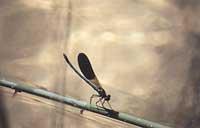
However, as mentioned above, one of the most important riches of the river Bidasoa is its rich ictiofauna, since the Bidasoa and its tributary Endara are the only rivers of Hego Euskal Herria that carry salmon upstream. This is due to the low industrialization of the villages of the Bidasoa valley, which allows a fairly good water quality. However, the proliferation of industrial and organic spills in recent years in Irun, Hondarribia, Bera and Lesaka, as well as the decrease in flows and the increase in water temperature caused by hydroelectric plants and the harmful effects on the fish population of the Bidasoa River, should be highlighted. At this point, the project carried out by the Government of Navarra in the Oronoz-Mugaire fish farm to prevent the loss of salmon from the Bidasoa River in recent years stands out. Therefore, it must be said, without fear, that there is a direct relationship between the abundance of salmon that has been this year and the work done in this center, which is performing a conversion and serious work.

However, for the study of the ictiofauna of the river Bidasoa it is necessary to take into account that salmon (Psalm salar) is not the only representative of this group, but the river trout (Psalm trutta fario), the sea trout (Psalm trutta trutta), the desespinosa shell (Noemacheilus barbatulus) and the eel (Anguilla).
The latter, like salmon, has a great attraction for biologists for its migratory life cycle. However, there is a big difference between the two, while the salmon is anadrome (it reproduces in the river), the conger is the catadromo (it reproduces in the sea).
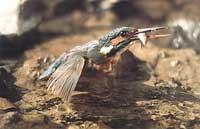
I would not like to conclude this article without making a small current study of the Bidasoa River, although nobody can think that compared to the rest of the rivers of the Basque Country is in an optimal situation, the truth is totally different.
In addition to the damage caused by the aforementioned industrial and organic wastes and hydroelectric plants, both in Gipuzkoa and in Navarra, there are numerous projects that can leave the river channeled. The modification of the first phase of the ZAISA transport terminal in Irun and the new projects in the river (Gipuzkoa, 2. With phases 4 and 5, while Puntxas, Alunda and Lastaola want to occupy the land, in Navarra they want to build an industrial estate in the Alquaiaga de Bera), life in the Bidasoa river can reach terrible rivers.

At this time when we talk about river recovery, it would be sad, as a result of ill-planned wild evolution, to destroy the only well preserved river so far. Often ignorance has been responsible for these killings. Let us therefore try to learn more about our ecological heritage, one of the most important aspects of our history.





